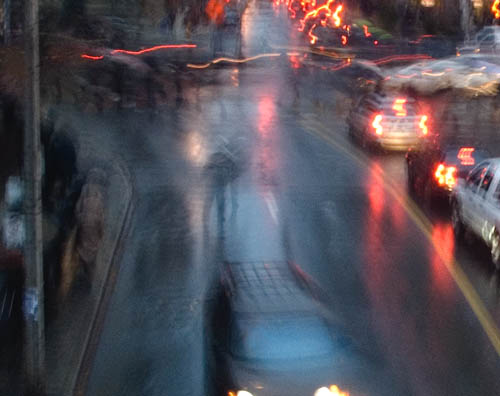Gravel and Grace
Version 1.2, © 2007 by Dale Cotton, all rights reserved.
I watched a bio of Louis Armstrong over the holidays. Louis did little more than teach the world how to make music. Before Louis music was a just-so-story, made in Europe by dead people. Exquisitely crafted, beautifully rendered ... with about as much vitality as a bed pan.
Photography seems to be in need of another Louis. Is there something in the Euro-Caucasian genome that prescribes this propensity for emulating zombies? I'm late to the party, but it seems to me that photography was beginning to jive a bit in the 1930s and '40s with the likes of Friedlander and Winogrand. Now, with the digital camera revolution married to the Internet revolution, there is a massive upswell of amateurs who can't seem to get past the four-square prissiness of static content, squeaky-clean detail, saturated but not garish colour, and studio-perfect lighting.
Is there no one left in photography who can understand why Louis had gravel in his voice, sang syllables that couldn't be found in any dictionary, and riffed cascades of notes that perpetually played tag with the down beat? What does the visual equivalent of that look like?
What I'm talking about is different from art school experimentalism and university conceptualism. Europe recognized its own musical malaise at the same time Louis was waifing it in the streets of New Orleans. But the prescription Europe came up with was to push its head-tripping to new extremes: the dodecaphonic arythmia of Berg and Schoenberg. Art and intellect make uneasy bed-fellows; the offspring are most often alienation, neurosis, and despair. Jive shows us the way – not less in touch with the life force, but more.
(OK. Yes. I know I'm grossly polarizing the dichotomy between classical and jazz, as well as incorrectly equating classical music with European music. But my prosaic license is quite up-to-date, thank you: so don't bother trying to sue. ;)
